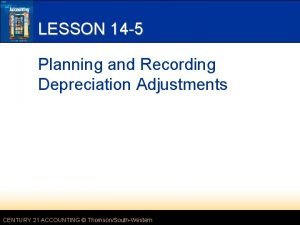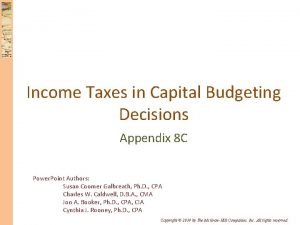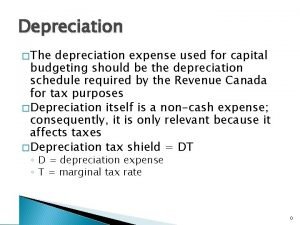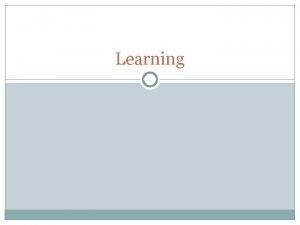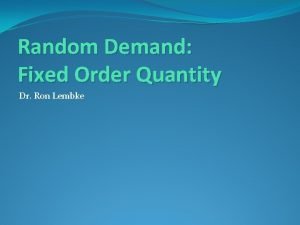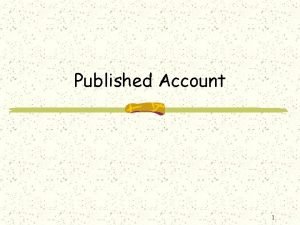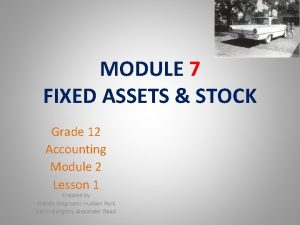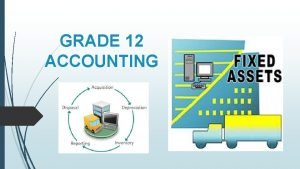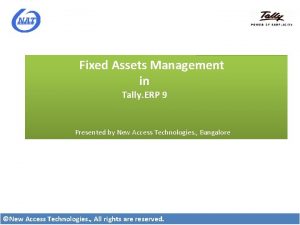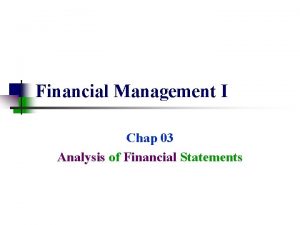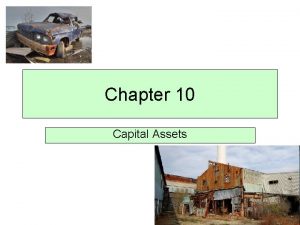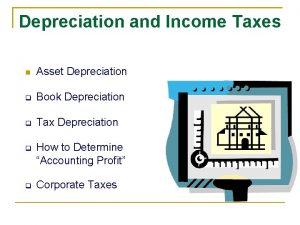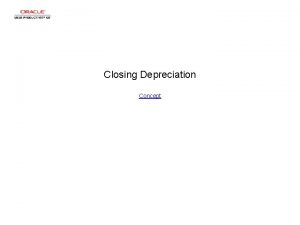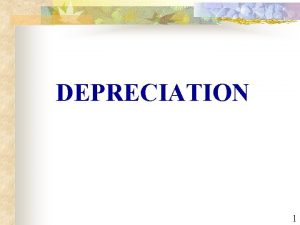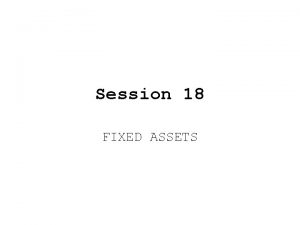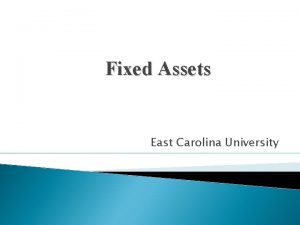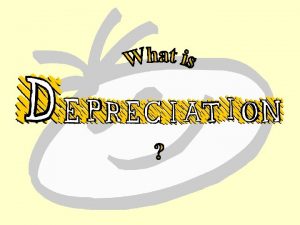CHAPTER 9 Depreciation of Fixed Assets CAPITAL ASSETS













- Slides: 13

CHAPTER 9 Depreciation of Fixed Assets

CAPITAL ASSETS l l l Fixed/Capital assets are long-lived assets that are used in the operations of a business and are not intended for sale to customers. Capital assets are recorded at cost in accordance with the cost principle. Cost consists of all the list price plus tax if applicable

Depreciation/Amortization l l Depreciation is the process of allocating to an expense account the cost of a capital asset over its useful (service) life in a rational and systematic manner. Cost allocation is designed to provide for the proper matching of expenses with revenues in accordance with the matching principle. During an asset’s life, its usefulness may decline because of wear and tear or obsolescence. Land is the only capital asset that is not amortized.

Illustration 10 -6 FACTORS IN CALCULATING depreciation

DEPRECIATION METHODS Three methods of recognizing amortization are: 1. Straight-line, 2. Units of activity, and 3. Declining-balance. Each method is acceptable under generally accepted accounting principles. Management selects the method that is appropriate for their company. Once a method is chosen, it should be applied consistently.

STRAIGHT-LINE METHOD

STRAIGHT-LINE METHOD l depreciation is constant for each year of the asset's useful life

DECLINING-BALANCE METHOD l The calculation of periodic depreciation is based on a declining net book value (cost less accumulated depreciation) of the asset. l The depreciation rate remains constant from year to year, but the net book value to which the rate is applied declines each year. Net Book Value (at beginning of year) Revenue Canada’s Rate (p 345) Depreciation Expense

Diminishing-Balance Method l l Depreciation expense based on asset’s diminishing carrying amount (cost less accumulated depreciation) Depreciation rate remains constant, but depreciation expense declines each year 9

DECLINING-BALANCE METHOD l Accelerated methods result in more depreciation in early years and less in later years

UNITS-OF-ACTIVITY METHOD To use the units-of-activity method, 1) the total units of activity for the entire useful life are estimated, 2) the amount is divided into amortizable cost to calculate the amortization cost per unit, and 3) the amortization cost per unit is then applied to the units of activity during the year to calculate the annual amortization. Amortized Cost Amortizable Cost per Unit Total Units of Activity during the Year Amortizable Cost per Unit Amortization Expense

Units-of-Production Method l l Useful life expressed as total units of production or activity Must estimate the total units of production that will be obtained from asset 12

UNITS-OF-ACTIVITY METHOD l Useful life is expressed in terms of total units of production or activity expected from the asset
 Gross operating cycle
Gross operating cycle Recorded depreciation expense on the plant assets
Recorded depreciation expense on the plant assets Depreciation tax shield in capital budgeting
Depreciation tax shield in capital budgeting Capital budgeting depreciation
Capital budgeting depreciation Schedules of reinforcement psychology
Schedules of reinforcement psychology Primary and secondary reinforcers
Primary and secondary reinforcers Fixed interval vs variable interval
Fixed interval vs variable interval Fixed order quantity
Fixed order quantity Fixed function logic devices
Fixed function logic devices Published account
Published account Fixed assets grade 12
Fixed assets grade 12 Fixed assets note
Fixed assets note Fixed assets in tally
Fixed assets in tally Times interest earned ratio
Times interest earned ratio

